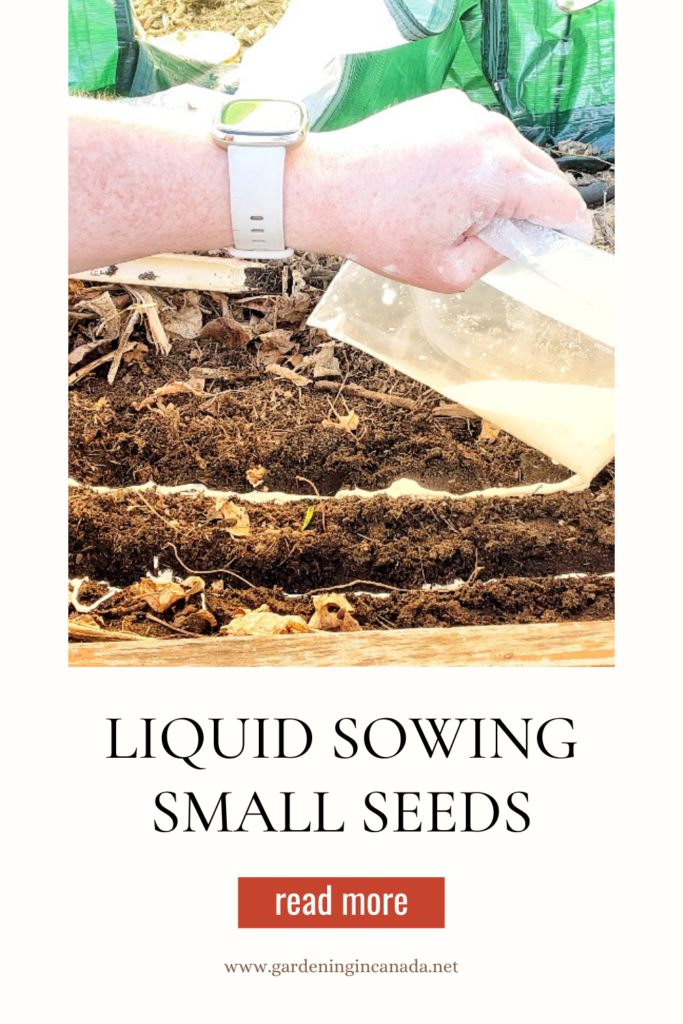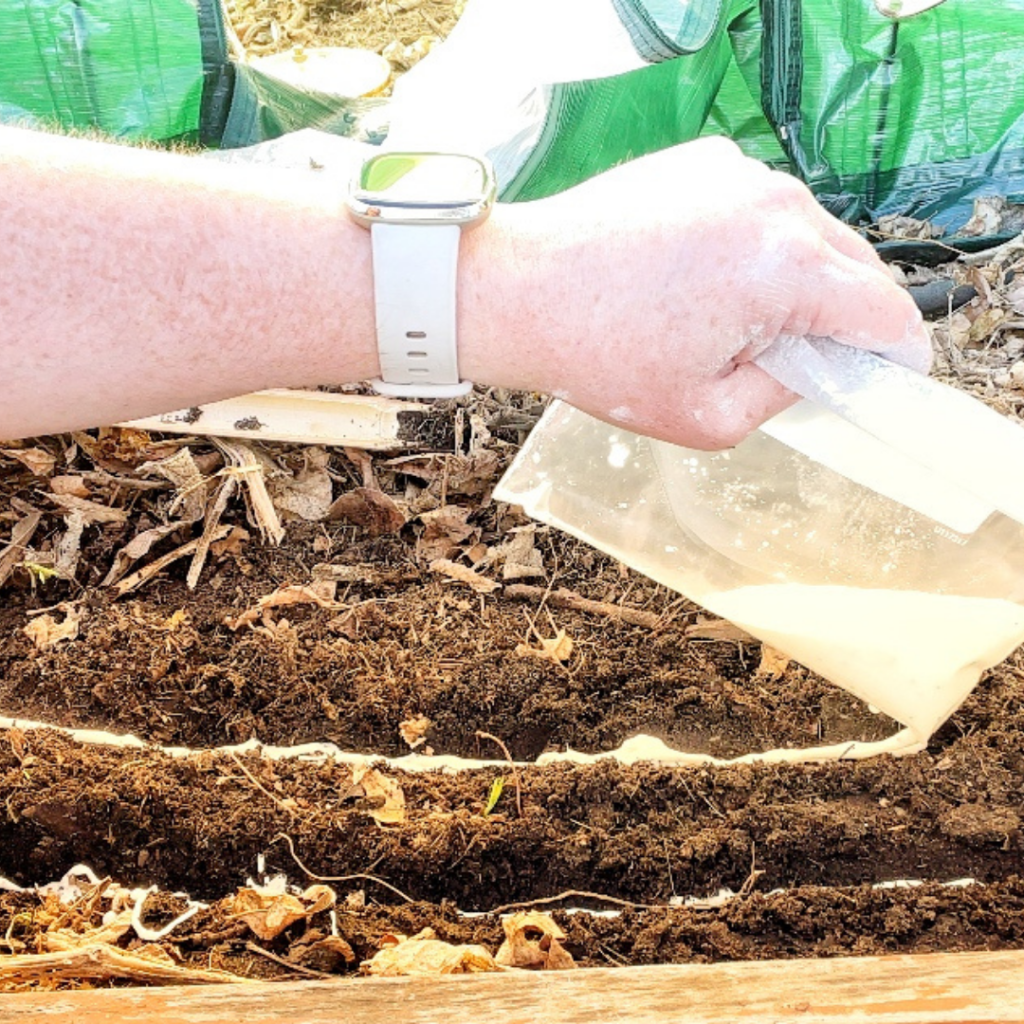- Canada’s Growing Zones Are Changing 2024 - January 12, 2024
- Attracting Wildlife To The Garden - May 16, 2023
- How To Garden Near A Septic Tank - May 9, 2023
Have you ever struggled to sow tiny seeds? If so liquid sowing is the perfect solution for planting tiny seeds. Liquid sowing can allow equal spacing, less thinning and keeping up moisture. Fluid Sowing is another name for Liquid Sowing.
If you are new to this blog my name is Ashley and I am a soil scientist. I am located in a Canadian Zone 3 and a USDA Zone 4. I write articles, and make YouTube videos, Instagram & Facebook posts all designed for Canadians and Cold Climate gardeners using science-based methods. If you are looking for anything specific be sure to let me know in the comments down below.
Whenever trying something new in your garden environment try a test patch first. This method may not work in arid environments, sandy soil or low light areas, Take the time to figure out what ratios you like to work with and what seeds fluid sowing works best with.
What is liquid Sowing?
Liquid sowing is the process of using a gel or paste to sow seeds. The process of liquid sowing allows for main benefits:
- Even moisture for germination
- Less thinning to do better seed placement
- Easier handling of smaller seeds
- Chitting will allow for an accurate seed placement
We will get into more details with the benefits below.
Seeds that can be liquid sown include:
- Carrots
- Lettuce
- Beets
- Basil
- Lemon Grass
- Amaranth
- Thyme
- Mint
- Onions
Recipe for liquid sowing?
The recipe for liquid sowing is really simple and the consistency will come down to your desired “runny”.
- Start off with 100 grams of corn starch
- Add 100 ml of warm water to start
- If you wanted to add fertilizer to the 100 ml of water your could in ¼ application. This is best done with an organic liquid fertilizer.
- Use more water as needed
- If you want a faster-moving liquid, add more water, for slower-moving add less
- Next, add your seeds. For 100 grams of corn starch, I usually will do 15 grams of seeds. Again how much you add will be dependent on your densely you want to sow your seeds.
Liquid sowing chitted seeds
When liquid sowing we are able to pre-sprout our seeds, also known as chitting. This is best done by either using the 100 ml of water you would initially use for the liquid sowing. You would then simply leave the seeds in water for 24-48 hrs.
Once they have been sitting you would add the water to a bag of cornstarch and begin the liquid sowing process. You want to be careful not to break the seeds when mixing the water with the cornstarch mixture.
The second liquid sowing with chitted seeds method involves using a damp paper towel and fully sprouting the seeds inside a Ziploc. All you would do is add the seeds to a damp paper towel and allow them to sit until germinated. Once this is done you would pre-mix the liquid sowing gel and then carefully add your pre-sprouted seeds. Again be very careful not to snap any seedling stems or roots.
Why would we liquid sow?
Liquid sowing our seeds has a few benefits, most of which are based on better gemination and ease of planting. It could be argued that it increases yields mostly because it results in better gemination rates. This happens by maintaining moisture throughout the germination process. Seedling need to be kept moist throughout the germination process. If they are allowed to dry out it can damage the initial root and the seedling will die off.
If you have soil that dries out quickly or simply do not have the time to water daily then wet sowing is your solution. Liquid sowing will also for better spacing and less thinning. This is because fluid sowing allows your to evenly space your seeds. Seeds that are darker in colour stand out against the white gel liquid. This will allow you to see how many seeds you are adding to the row and adjust as needed.
Do you cover your liquid sown seeds with soil?
I do a light sprinkle coating of soil or mulch to help retain moisture but this is not a must and should be done with caution. With small seeds do not have as much vigor to find the light so the thinner the better, If you have a photosensitive seed like lettuce, I would skip covering the seeds.
There you have it a complete guide to liquid sowing also known as fluid sowing. This technique can be used with smaller seeds to ensure better germination, equal spacing and less thinning. Whenever changing any garden setup up i encourage doing a test strip.


